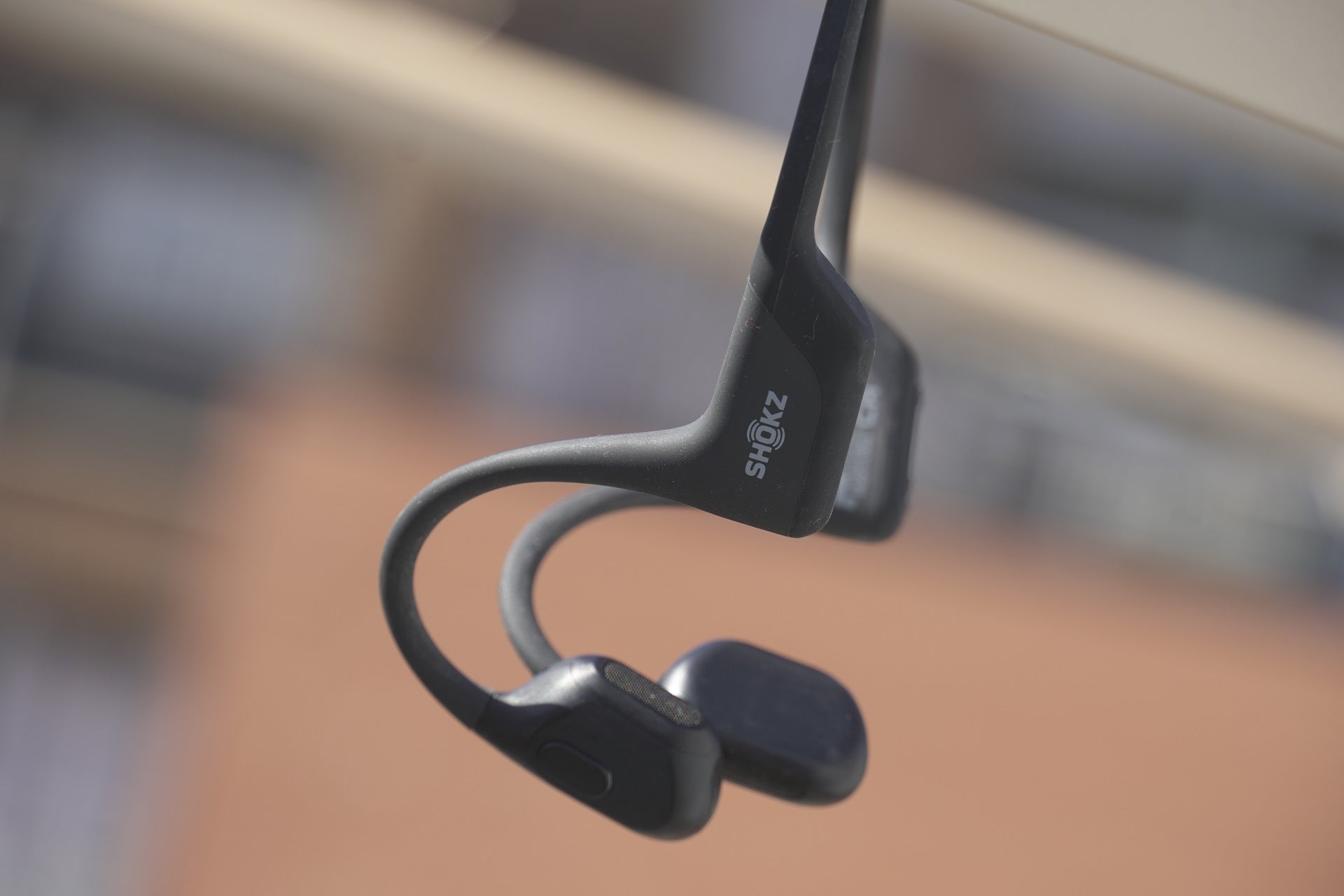Verdict
The Shokz OpenRun Pro Mini takes the recipe of Shokz’s bone conduction headphones and transfers them to a smaller form factor. They’re great for exercise and decent enough for general use.
Pros
- Lightweight design for exercise
- Good battery life
- Better than expected call quality
- Bluetooth multipoint support
Cons
- Bass lacks heft
- Design lets external sounds mix with audio
-
Water resistanceIP55 splashproof rating -
Battery10-hours of battery life -
Dual noise-cancelling microphoneCancels external sounds for clearer call quality
Introduction
Shokz has become the brand in the growing bone conduction market, producing a selection of headphones that appeal to sporty types. The Shokz OpenRun Pro Mini are a variant of the company’s premier model, the Mini referring to its smaller size for a tighter fit around the head.
Bone conduction headphones come with positives and negatives, so has Shokz managed to work around the constraints of its design with its smaller version?
Design
- Lightweight design
- IP55 water resistance
- Magnetic cable for charging
In shape, appearance, IP rating and even weight, there’s no difference between the Shokz OpenRun Pro Mini and the standard OpenRun Pro version. They’re lightweight (29g) and once on I barely noticed they were there during several runs.
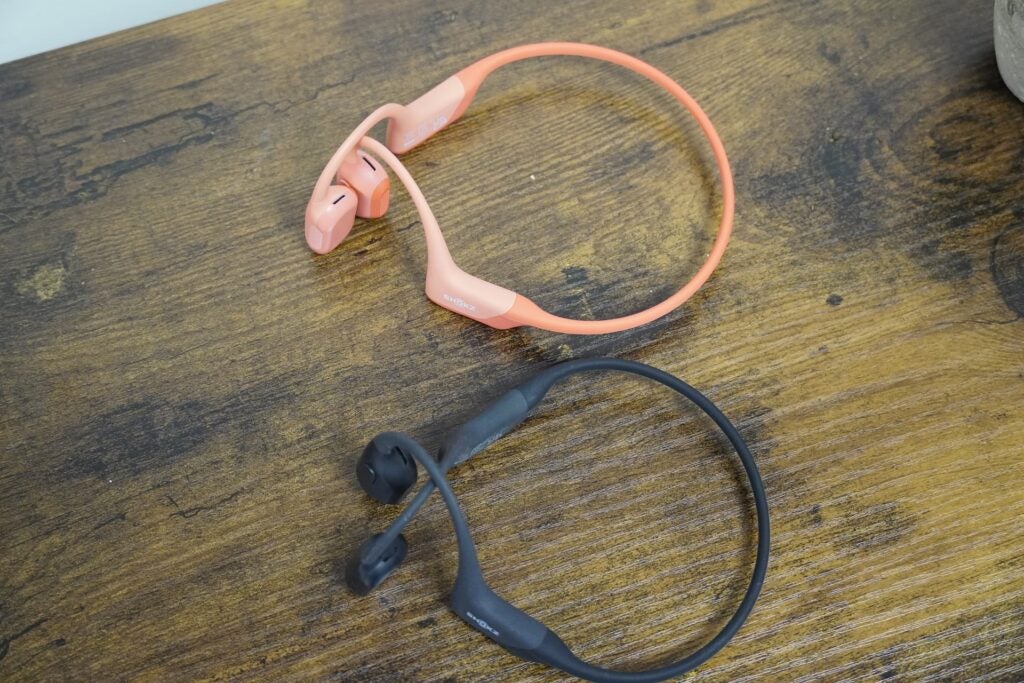
The bigger model tends to leave a gap around the back of the frame and the head. The difference between the two sizes is 0.83-inches, which doesn’t sound much but the smaller version fit my head to a tee – a surprise since I always thought I had a massive head.
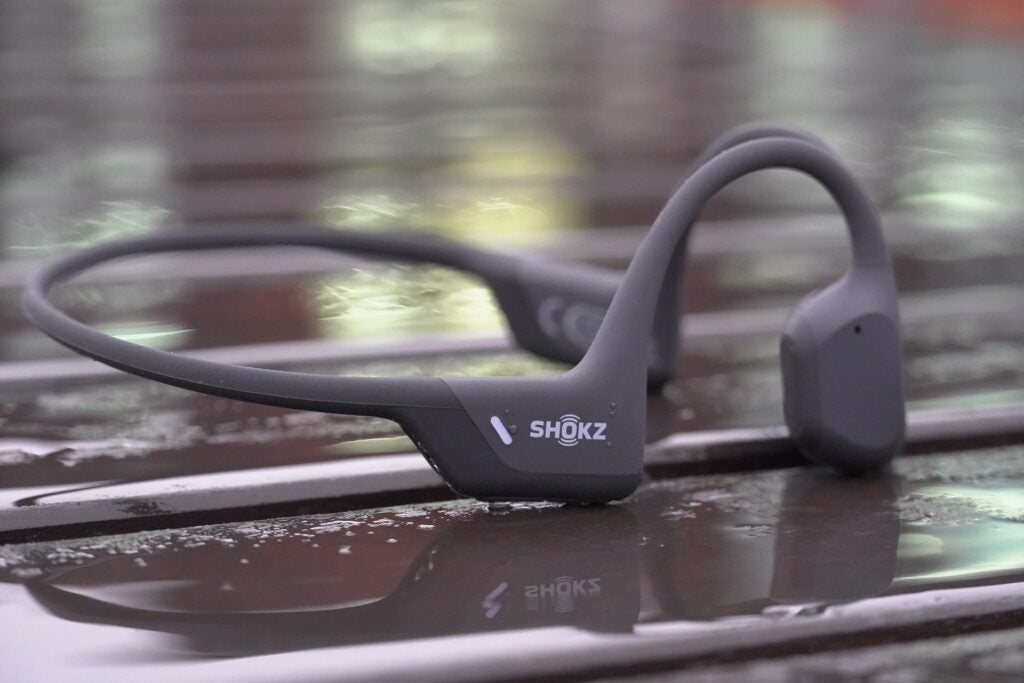
They’re bendy and flexible and haven’t come a cropper when flung into a bag with a camera and books for company. Their IP55 rating is both sweat and water resistant as well as offering some low protection against dust. That doesn’t mean the Mini is waterproof, but a wipe down in case they get dirty should be fine.
There are pluses and minuses to this design, and in the positive category is the greater situational awareness as there’s nothing blocking your ears, which is helpful for situations such as runs near busy roads. There’s also no fatigue listening to music, and none of the oiliness and discomfort that in-earphones can produce.
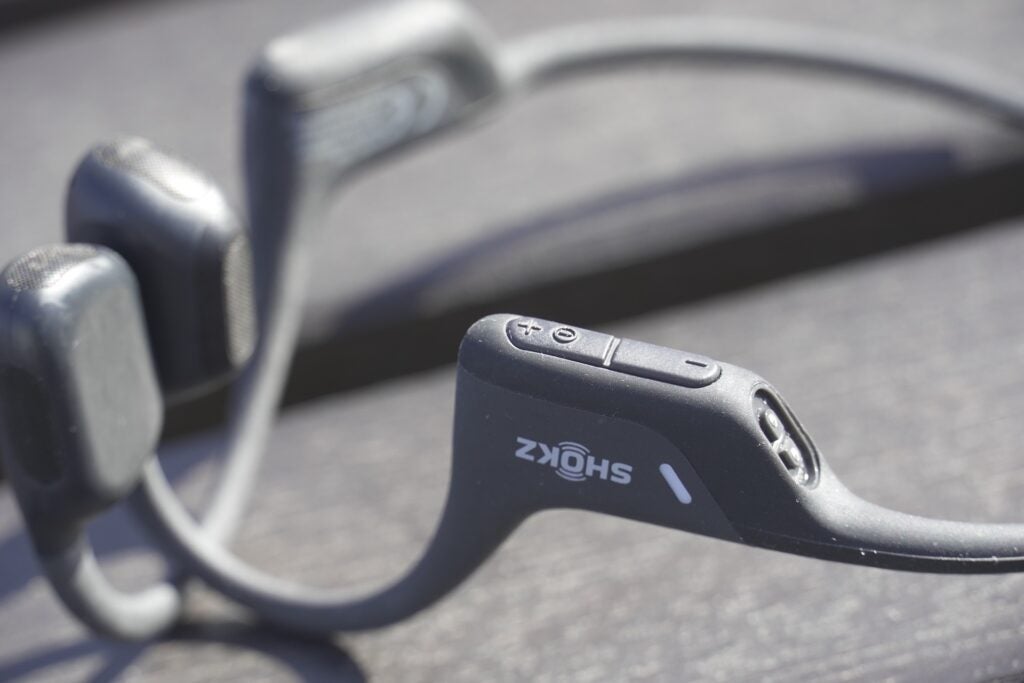
The negative is the lack of noise isolation. Running on or near busy roads sees audio swamped by vehicles going past. It’s a similar issue using the headphones in a supermarket or at train stations, as music is almost completely drowned out.
There are controls on the headphones which, given my unfamiliarity with the design, I initially found hard to find. Muscle memory made me reach for my ear when the actual volume controls were located behind, while on the left is a multi-function button for playback and track skipping. Eventually I got used to the arrangement but if you haven’t worn a pair of bone conduction headphones before, I’d say there’s a slight learning curve in adjusting to them.
Choices of colours come in black and beige, and there’s a carry case to keep the headphones in and a magnetic cable that latches on to charge them by USB.
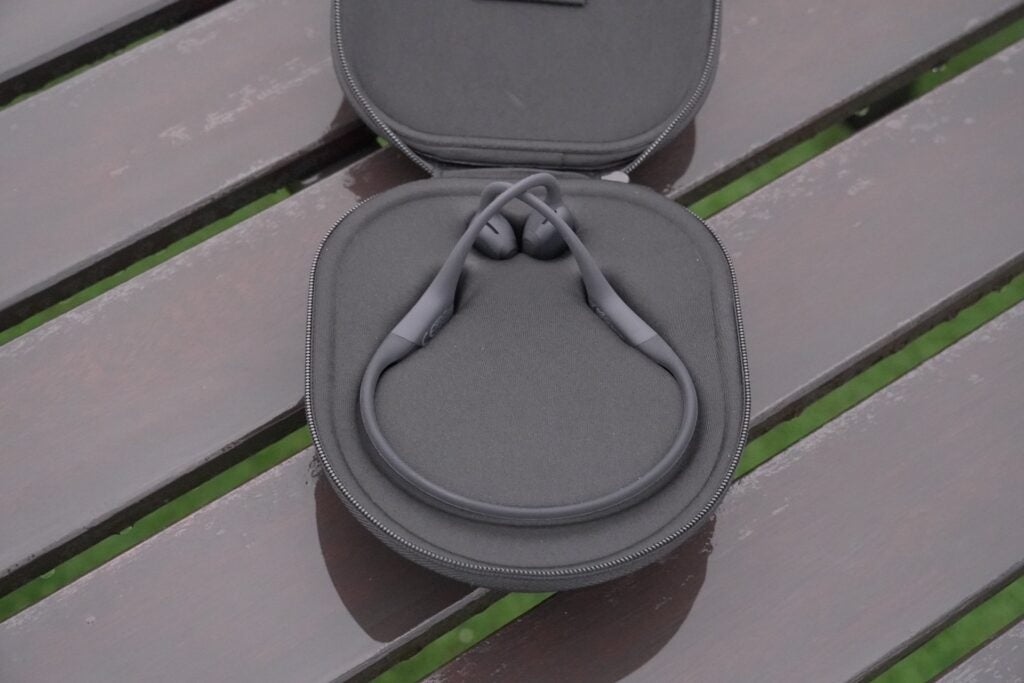
Features
- Companion app
- 10-hour battery life
- Dual Noise-Cancelling Microphone for calls
There’s an app, but it’s only compatible with certain OpenRun models, which includes the Pro and Pro Mini. The app offers the basics in upgrading firmware, checking battery, control over playback, EQ options and enabling Bluetooth multipoint for connection to two devices at once.
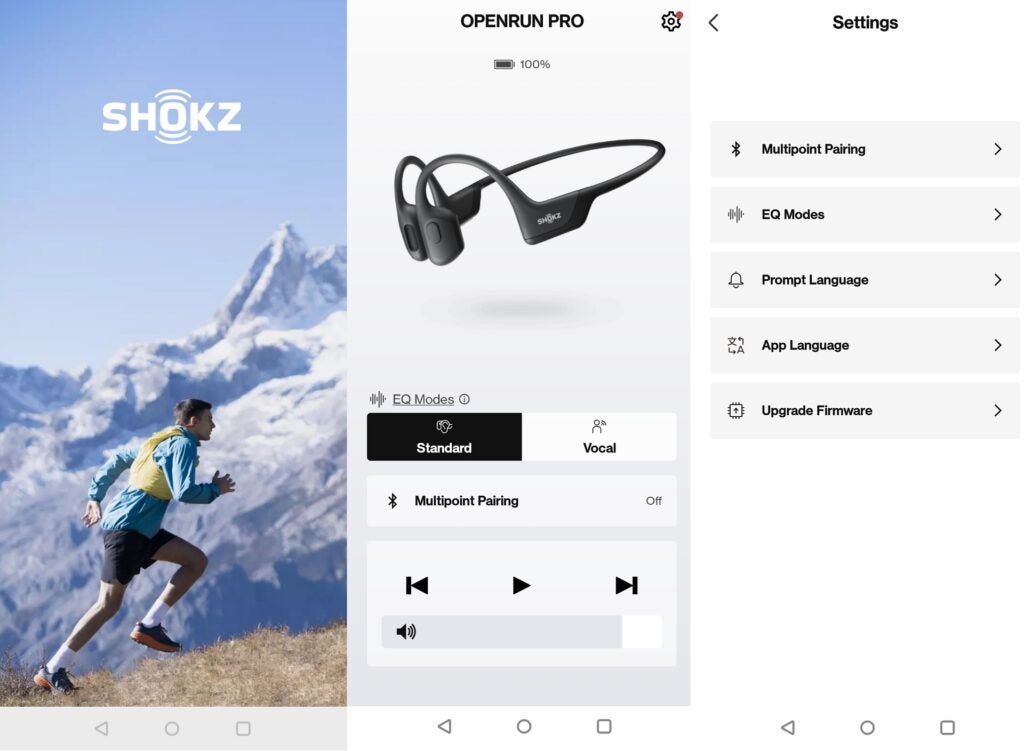
You don’t need to open the app to adjust the EQ as that can be done by holding both volume buttons until you hear a beep, and Audrey (the voice of the headphones) instructs which mode the headphones are in. With a choice of Vocal and Standard your choices are limited, but Voice is decent enough, amplifying voices without greatly distorting music too much, though its main intention is for audiobooks and podcasts.
Shokz quotes 10 hours of battery and that seems about right from my tests. There were a few discrepancies at first, as using the OpenRun Pro Mini for 90 minutes at about 60% volume saw them drop from 60% to 57%. Using the headphones for two hours on another occasion saw them drop 20%, which seemed more indicative of their performance. Five minutes of charging provides another 90 minutes on the go.
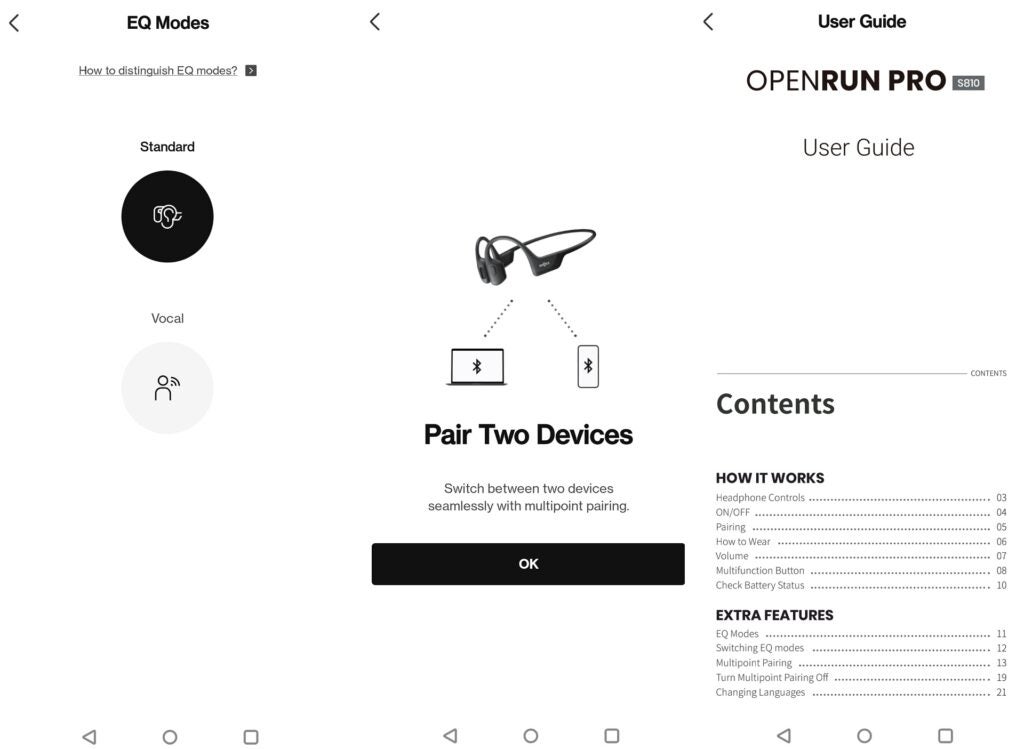
Call quality is another happy surprise with these headphones. Using them at a busy food market and the person on the other end said they could hear my voice clearly with the noises around suppressed that they never rose above being a minor distraction. It is affected by loud noises; I recall a cement mixer truck going past and neither of us being able to hear what was said. These headphones are good indoors and out for calls, just watch out for loud noises and blustery conditions.
Sound Quality
- Spacious soundstage
- Lacks heft to bass
- Clear, and decently detailed treble
The disadvantage of having an open design is that sound quality is impacted. Low frequencies aren’t well served by the Shokz OpenRun Pro Mini because bone conduction headphones can’t generate the seal and pressure that true wireless, on-ears or over-ears can.
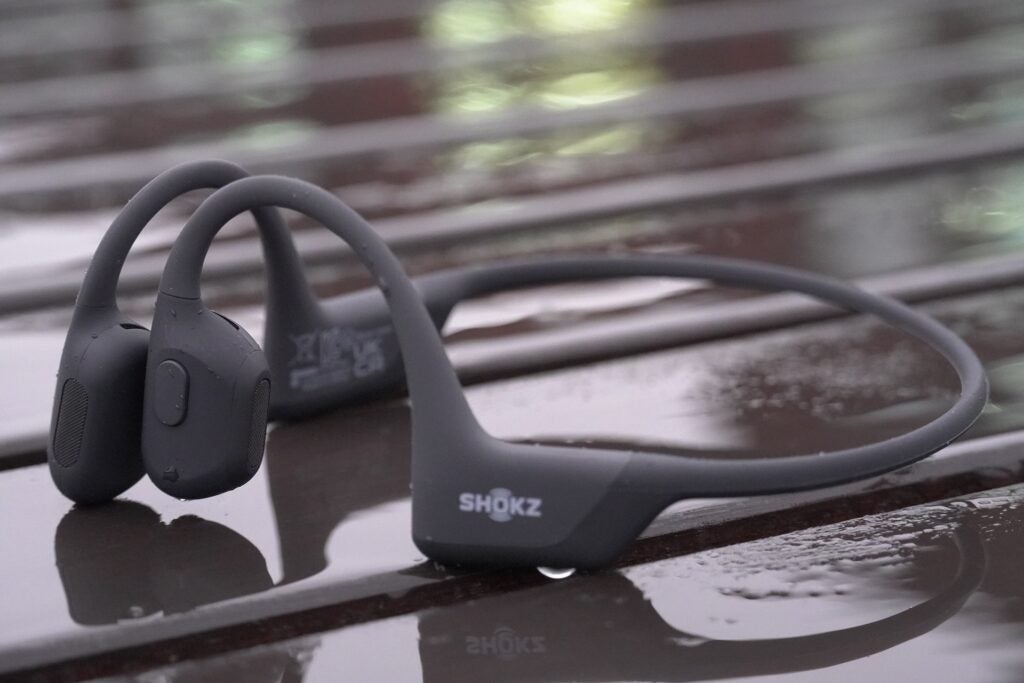
And of course, when it gets loud in the surrounding environment, the audio gets lost, especially if you’re listening to tracks with complex beats and instrumentation. With all that said, the Shokz OpenRun Pro Mini sounded better than I expected.
The midrange is slightly muddled, not the sharpest or clearest performance; and I’d describe bass as moderate. That’s not to say that bass doesn’t have a presence – there’s more clarity to bass on the Shokz than there is on the Creative Outlier Free – but low frequencies aren’t big or punchily delivered with La Roux’s In for the Kill. With bass heavy tracks such as Sam Smith/Kim Petras’ Unholy I can feel the tickling feeling as the drivers vibrate against my temple – it is a slightly odd sensation.
The stereo image created (the sense of left and right in a track) is better than expected given the OpenRun Pro Mini is having to both vibrate against your temple and fire audio into the ears. And that soundstage is described in spacious terms with a nice sense of depth too.
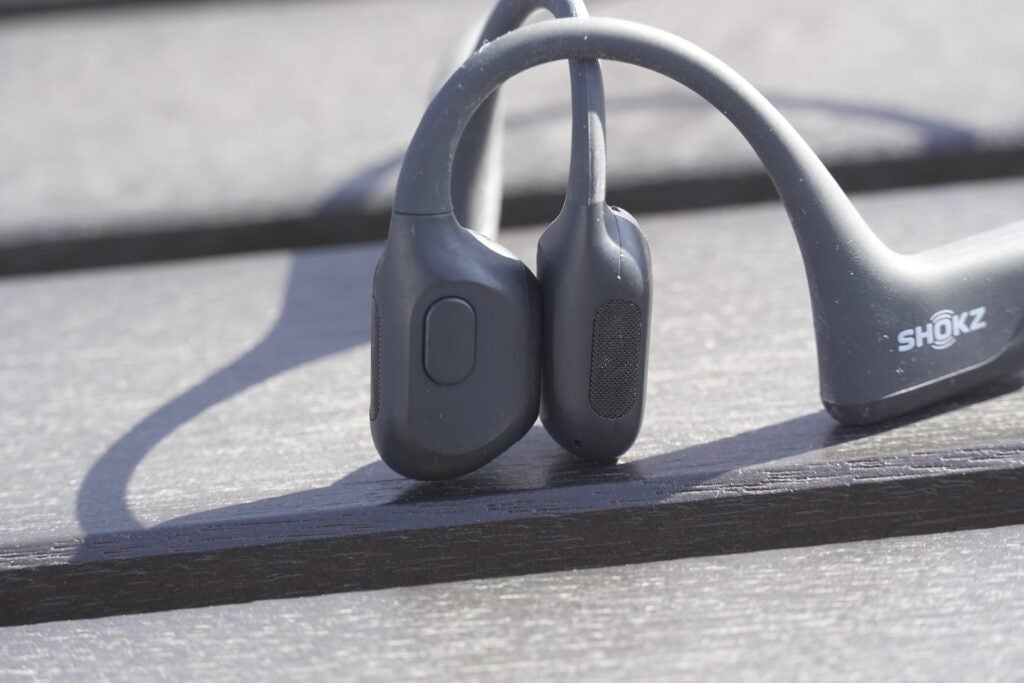
Vocals are given decent clarity, yet they could benefit from more, though I’ve found this depends on the track as some sound better than others. There’s a warmth to the OpenRun’s sound that makes the midrange tonally smoother but can produce a fuzzy sense of definition which seems to be a trait of most bone conduction headphones.
Push the volume up too much and the Shokz OpenRun Pro Mini can sound strained as vocals sound hoary, and the same can be said about the midrange too.
Treble is handled well by the Shokz, and perhaps the most confident aspect of the headphone’s performance. There’s decent brightness to the high frequency notes in Shuggie Lotis’ Strawberry Letter 23, and they don’t sound too rolled off with GoGo Penguin’s Atomised. It caps off a performance that’s better than I anticipated from this type of headphone.
Latest deals
Should you buy it?
If you want to be aware of your surroundings: The design makes it easy to hear what’s around the wearer, whether the headphones are used for exercise or general use.
If your playlist is bass-heavy: Shokz talks about a premium sound with heavy bass but that is not the case with the OpenRun Pro Mini. Bass is delivered in rather limp fashion.
Final Thoughts
Having not reviewed a pair of bone conduction headphones before, I’m pleasantly surprised by the performance of the Shokz OpenRun Pro Mini.
These aren’t headphones for critical listening; the performance is less than that of true wireless, over-ear, or on-ear headphones, but this is a different type of headphone, different performance, and different expectations.
Accept the limitations and you’ll find that call quality is surprisingly good, battery life meets expectations, and the design is useful for those who want awareness of their surroundings.
How we test
We test every pair of headphones we review thoroughly over an extended period of time. We use industry-standard tests to compare features properly. We’ll always tell you what we find. We never, ever, accept money to review a product.
Find out more about how we test in our ethics policy.
Tested with real world use
Battery drain carried out
FAQs
The only obvious difference between the two models is that the OpenRun Pro Mini is the smaller of the two. Otherwise they’re virtually the same in every regard.
Sustainability
Trusted Reviews’ holds the fact that global warming is not a myth as a core value and will continuously endeavour to help protect our planet from harm in its business practices.
As part of this mission, whenever we review a product we send the company a series of questions to help us gauge and make transparent the impact the device has on the environment.
We currently haven’t received answers to the questions on this product, but will update this page the moment we do. You can see a detailed breakdown of the questions we ask and why in our sustainability info page.
Jargon buster
Bone conduction
Transmits sound waves to the ear by vibrating bones in the skull, a technique used by a number of fitness-based headphones
Verdict
The Shokz OpenRun Pro Mini takes the recipe of Shokz’s bone conduction headphones and transfers them to a smaller form factor. They’re great for exercise and decent enough for general use.
Pros
- Lightweight design for exercise
- Good battery life
- Better than expected call quality
- Bluetooth multipoint support
Cons
- Bass lacks heft
- Design lets external sounds mix with audio
-
Water resistanceIP55 splashproof rating -
Battery10-hours of battery life -
Dual noise-cancelling microphoneCancels external sounds for clearer call quality
Introduction
Shokz has become the brand in the growing bone conduction market, producing a selection of headphones that appeal to sporty types. The Shokz OpenRun Pro Mini are a variant of the company’s premier model, the Mini referring to its smaller size for a tighter fit around the head.
Bone conduction headphones come with positives and negatives, so has Shokz managed to work around the constraints of its design with its smaller version?
Design
- Lightweight design
- IP55 water resistance
- Magnetic cable for charging
In shape, appearance, IP rating and even weight, there’s no difference between the Shokz OpenRun Pro Mini and the standard OpenRun Pro version. They’re lightweight (29g) and once on I barely noticed they were there during several runs.

The bigger model tends to leave a gap around the back of the frame and the head. The difference between the two sizes is 0.83-inches, which doesn’t sound much but the smaller version fit my head to a tee – a surprise since I always thought I had a massive head.

They’re bendy and flexible and haven’t come a cropper when flung into a bag with a camera and books for company. Their IP55 rating is both sweat and water resistant as well as offering some low protection against dust. That doesn’t mean the Mini is waterproof, but a wipe down in case they get dirty should be fine.
There are pluses and minuses to this design, and in the positive category is the greater situational awareness as there’s nothing blocking your ears, which is helpful for situations such as runs near busy roads. There’s also no fatigue listening to music, and none of the oiliness and discomfort that in-earphones can produce.

The negative is the lack of noise isolation. Running on or near busy roads sees audio swamped by vehicles going past. It’s a similar issue using the headphones in a supermarket or at train stations, as music is almost completely drowned out.
There are controls on the headphones which, given my unfamiliarity with the design, I initially found hard to find. Muscle memory made me reach for my ear when the actual volume controls were located behind, while on the left is a multi-function button for playback and track skipping. Eventually I got used to the arrangement but if you haven’t worn a pair of bone conduction headphones before, I’d say there’s a slight learning curve in adjusting to them.
Choices of colours come in black and beige, and there’s a carry case to keep the headphones in and a magnetic cable that latches on to charge them by USB.

Features
- Companion app
- 10-hour battery life
- Dual Noise-Cancelling Microphone for calls
There’s an app, but it’s only compatible with certain OpenRun models, which includes the Pro and Pro Mini. The app offers the basics in upgrading firmware, checking battery, control over playback, EQ options and enabling Bluetooth multipoint for connection to two devices at once.

You don’t need to open the app to adjust the EQ as that can be done by holding both volume buttons until you hear a beep, and Audrey (the voice of the headphones) instructs which mode the headphones are in. With a choice of Vocal and Standard your choices are limited, but Voice is decent enough, amplifying voices without greatly distorting music too much, though its main intention is for audiobooks and podcasts.
Shokz quotes 10 hours of battery and that seems about right from my tests. There were a few discrepancies at first, as using the OpenRun Pro Mini for 90 minutes at about 60% volume saw them drop from 60% to 57%. Using the headphones for two hours on another occasion saw them drop 20%, which seemed more indicative of their performance. Five minutes of charging provides another 90 minutes on the go.

Call quality is another happy surprise with these headphones. Using them at a busy food market and the person on the other end said they could hear my voice clearly with the noises around suppressed that they never rose above being a minor distraction. It is affected by loud noises; I recall a cement mixer truck going past and neither of us being able to hear what was said. These headphones are good indoors and out for calls, just watch out for loud noises and blustery conditions.
Sound Quality
- Spacious soundstage
- Lacks heft to bass
- Clear, and decently detailed treble
The disadvantage of having an open design is that sound quality is impacted. Low frequencies aren’t well served by the Shokz OpenRun Pro Mini because bone conduction headphones can’t generate the seal and pressure that true wireless, on-ears or over-ears can.

And of course, when it gets loud in the surrounding environment, the audio gets lost, especially if you’re listening to tracks with complex beats and instrumentation. With all that said, the Shokz OpenRun Pro Mini sounded better than I expected.
The midrange is slightly muddled, not the sharpest or clearest performance; and I’d describe bass as moderate. That’s not to say that bass doesn’t have a presence – there’s more clarity to bass on the Shokz than there is on the Creative Outlier Free – but low frequencies aren’t big or punchily delivered with La Roux’s In for the Kill. With bass heavy tracks such as Sam Smith/Kim Petras’ Unholy I can feel the tickling feeling as the drivers vibrate against my temple – it is a slightly odd sensation.
The stereo image created (the sense of left and right in a track) is better than expected given the OpenRun Pro Mini is having to both vibrate against your temple and fire audio into the ears. And that soundstage is described in spacious terms with a nice sense of depth too.

Vocals are given decent clarity, yet they could benefit from more, though I’ve found this depends on the track as some sound better than others. There’s a warmth to the OpenRun’s sound that makes the midrange tonally smoother but can produce a fuzzy sense of definition which seems to be a trait of most bone conduction headphones.
Push the volume up too much and the Shokz OpenRun Pro Mini can sound strained as vocals sound hoary, and the same can be said about the midrange too.
Treble is handled well by the Shokz, and perhaps the most confident aspect of the headphone’s performance. There’s decent brightness to the high frequency notes in Shuggie Lotis’ Strawberry Letter 23, and they don’t sound too rolled off with GoGo Penguin’s Atomised. It caps off a performance that’s better than I anticipated from this type of headphone.
Latest deals
Should you buy it?
If you want to be aware of your surroundings: The design makes it easy to hear what’s around the wearer, whether the headphones are used for exercise or general use.
If your playlist is bass-heavy: Shokz talks about a premium sound with heavy bass but that is not the case with the OpenRun Pro Mini. Bass is delivered in rather limp fashion.
Final Thoughts
Having not reviewed a pair of bone conduction headphones before, I’m pleasantly surprised by the performance of the Shokz OpenRun Pro Mini.
These aren’t headphones for critical listening; the performance is less than that of true wireless, over-ear, or on-ear headphones, but this is a different type of headphone, different performance, and different expectations.
Accept the limitations and you’ll find that call quality is surprisingly good, battery life meets expectations, and the design is useful for those who want awareness of their surroundings.
How we test
We test every pair of headphones we review thoroughly over an extended period of time. We use industry-standard tests to compare features properly. We’ll always tell you what we find. We never, ever, accept money to review a product.
Find out more about how we test in our ethics policy.
Tested with real world use
Battery drain carried out
FAQs
The only obvious difference between the two models is that the OpenRun Pro Mini is the smaller of the two. Otherwise they’re virtually the same in every regard.
Sustainability
Trusted Reviews’ holds the fact that global warming is not a myth as a core value and will continuously endeavour to help protect our planet from harm in its business practices.
As part of this mission, whenever we review a product we send the company a series of questions to help us gauge and make transparent the impact the device has on the environment.
We currently haven’t received answers to the questions on this product, but will update this page the moment we do. You can see a detailed breakdown of the questions we ask and why in our sustainability info page.
Jargon buster
Bone conduction
Transmits sound waves to the ear by vibrating bones in the skull, a technique used by a number of fitness-based headphones


















